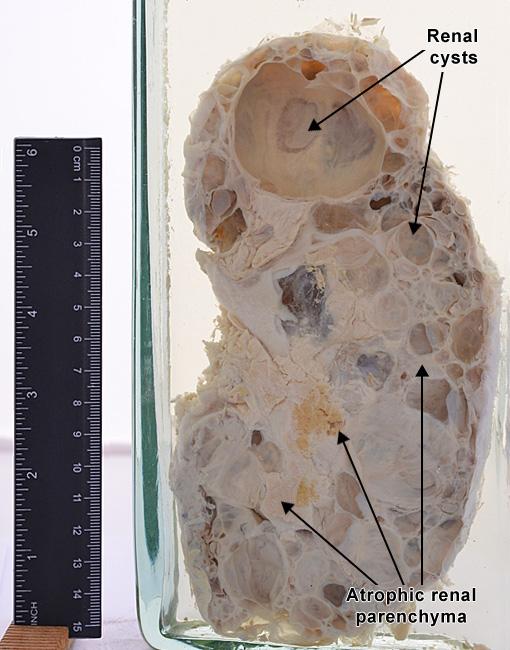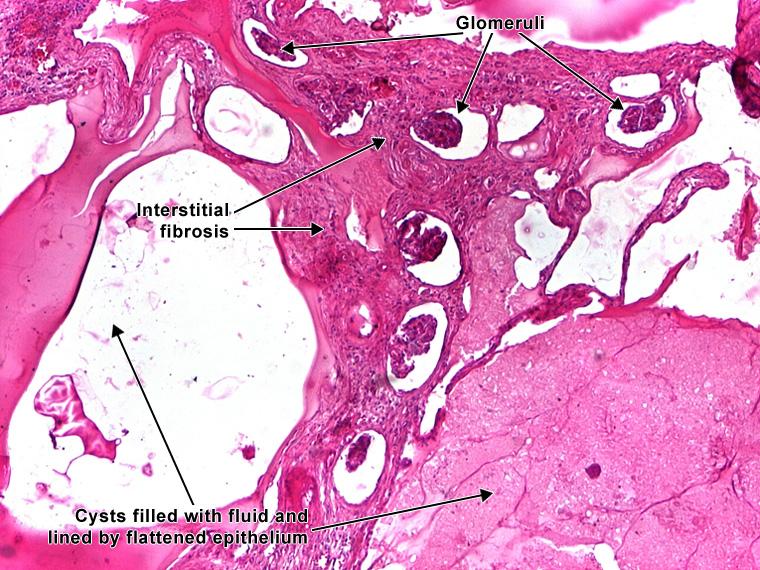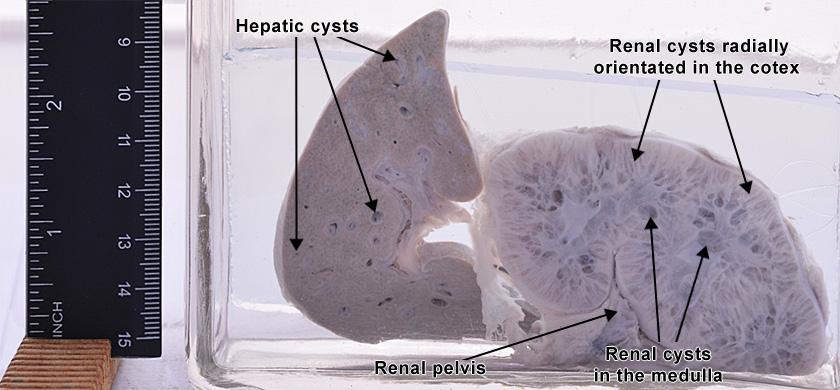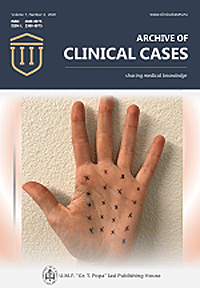Kidney Pathology
Autosomal-Dominant Polycystic Kidney Disease (ADPKD)
Polycystic kidney disease is congenital anomaly with genetic involvement, characterized by the presence of multiple kidneys' cysts.
Classification :
- Adult type polycystic kidney disease (autosomal dominant) = ADPKD
- Infantile type polycystic kidney disease (autosomal recessive) = ARPKD
Each of these two types have their own pathology and causes.
Autosomal-Dominant Polycystic Kidney Disease (ADPKD)
Polycystic kidney (adult type) is a manifestation of autosomal dominant polycystic kidney disease, caused by mutations in genes on chromosome 16p13.3 (PKD1 - producing protein Polycystin 1) and 4q21 (PKD2 - Polycystin 2).
ADPKD may associate some other extrarenal abnormalities, such as : cysts in the liver (polycystic liver disease), pancreas, spleen and lung, intracranial "berry" aneurysms and mitral valve prolapse.

In ADPKD, both kidneys are enlarged to impressive size (up to 25 cm and 4 kg, each), compressing abdominal organs.
The external surface of the kidney is deformed, bumped. On section, the cortex and medulla present numerous spherical cysts,
sized between 0.5 - 5 cm in diameter, containing a serous, hemorrhagic or gelatinous fluid. Between the cysts, the intervening
parenchyma is reduced, atrophic by compression. However, microscopically, this parenchyma is represented by functional
nephrons.

Microscopy.
Cysts (dilated tubuli and colector ducts) lined by cuboidal or flattened epithelium contain an eosinophilic fluid. The
parenchyma between cysts is represented by few atrophic / compressed but still functional nephrons (glomeruli and tubules),
with interstitial fibrosis and chronic inflammation. (HE, ob. 4x)
Infantile polycystic kidney type
Infantile polycystic kidney type is a manifestation of autosomal recessive polycystic kidney disease (ARKPD), more common in newborns and children.
ARKPD belongs to congenital hepato-renal fibrocystic syndrome, cause of morbidity and mortality in children in the first decade of life (perinatal, neonatal, infantile and juvenile type).
Renal disease is characterized by nephromegaly, hypertension, and varying degrees of renal dysfunction causing renal failure; more than 50 % of affected children requires renal transplantation in the first decade of life.
Liver disease is characterized by biliary abnormalities (dilated intrahepatic biliary ducts), which causes progressive hepatomegaly and portal hypertension in 40 -60 % of cases. In almost all cases, the cysts are associated with portal fibrosis and proliferation of portal bile ducts.

Macroscopy
Both kidneys are enlarged and have a smooth external surface, with preserved fetal lobulation.
On the cut surface, it reveals a sponge-like appearance with numerous cysts (dilated nephron tubules) round or fusiform, with sero-citrin content and sizes that varies from 0.1 to 1 cm. They extend radially in cortex and medulla, completely replacing the renal parenchyma.
Liver parenchyma shows round cysts similar to those described in the kidney.

